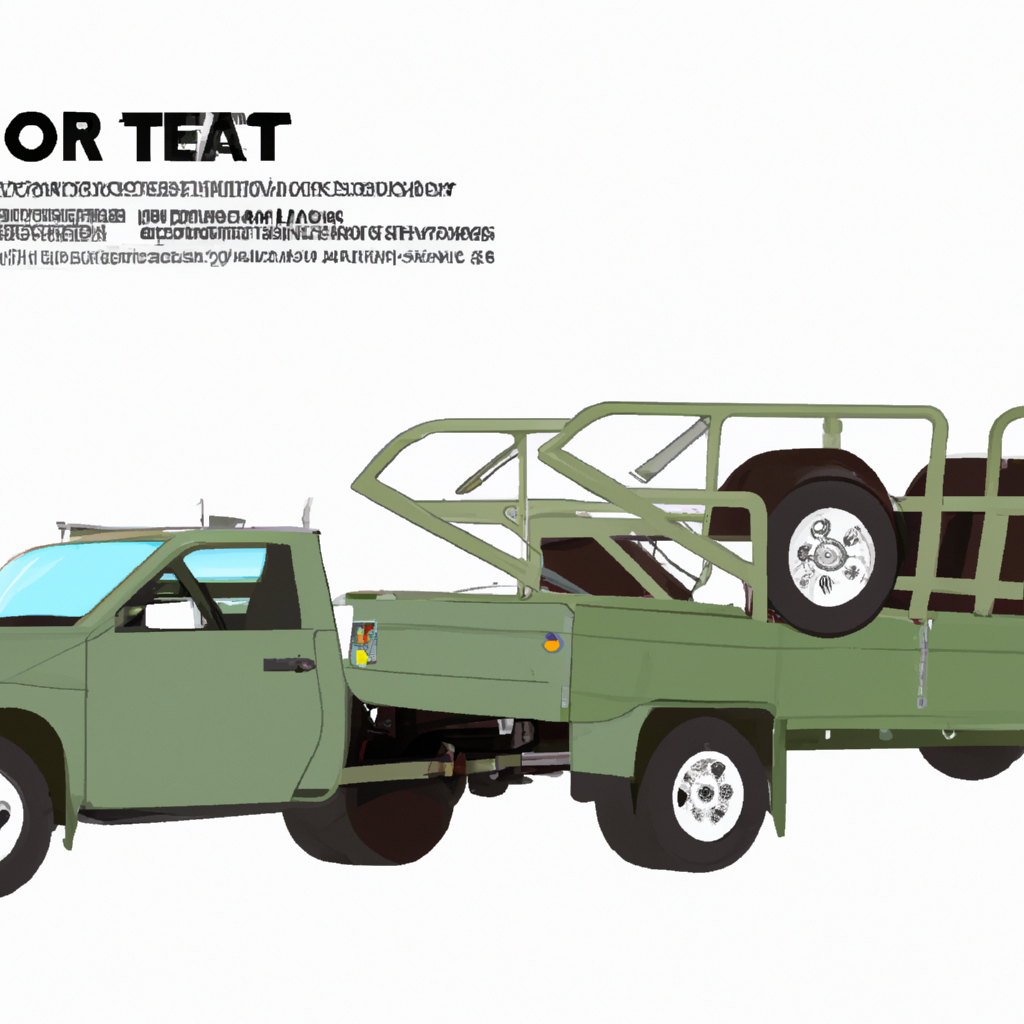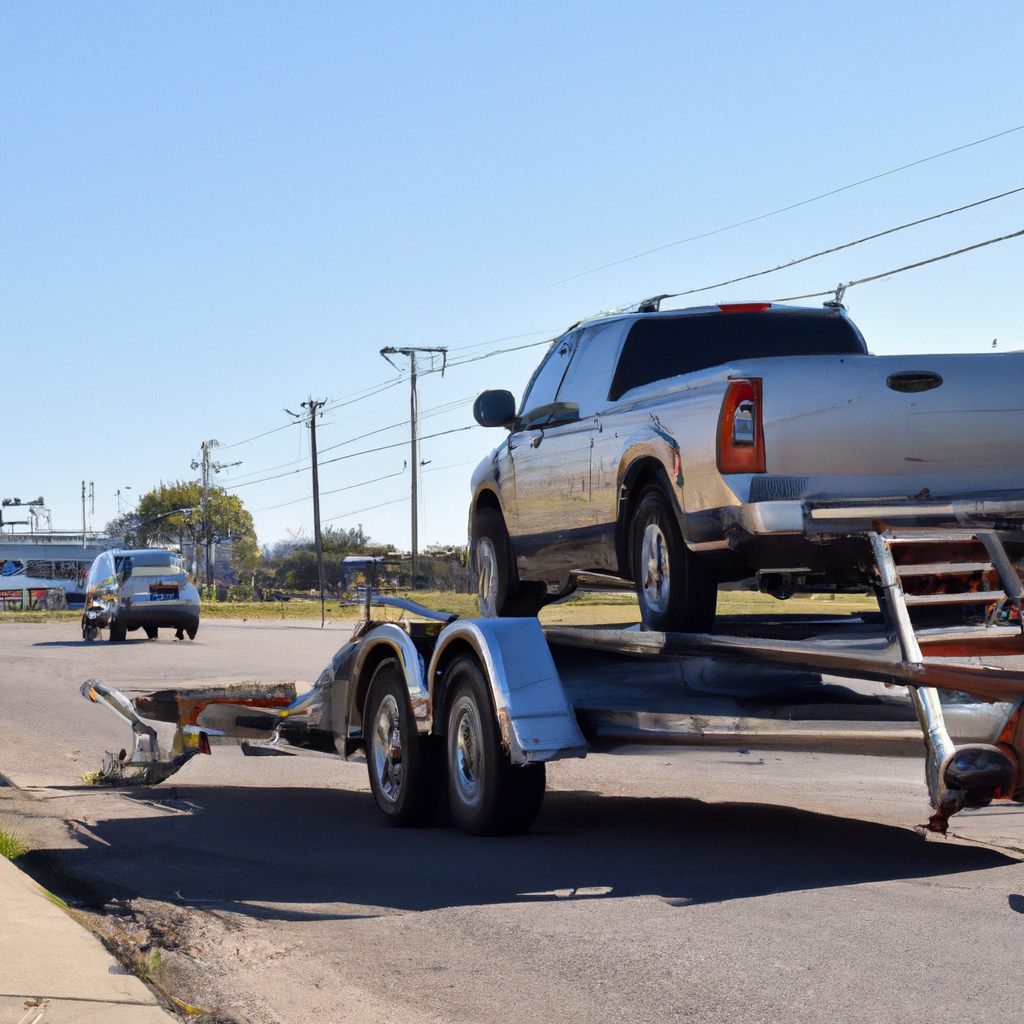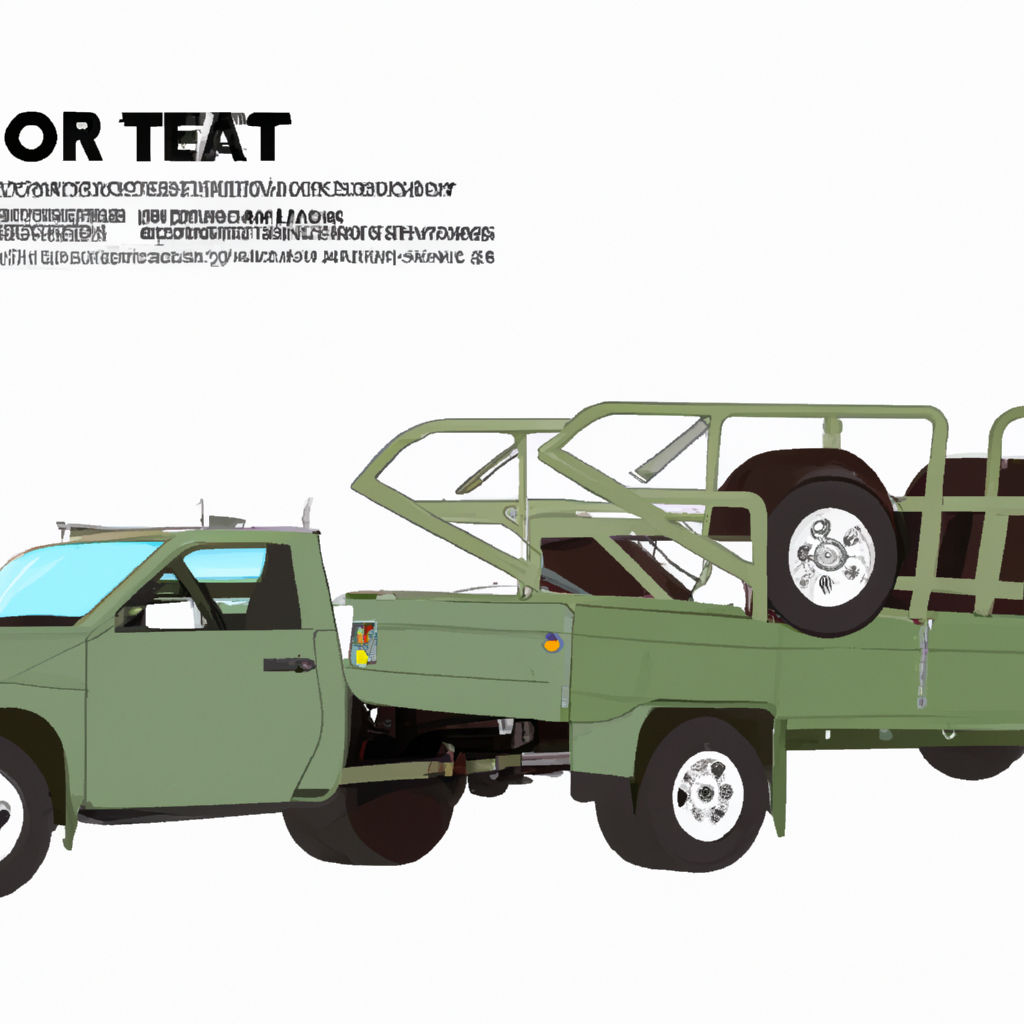In the world of towing, understanding the 80% towing capacity rule is essential. This rule states that the weight of a trailer should not exceed 80% of the towing vehicle’s maximum towing capacity. By adhering to this guideline, you can ensure safer and more efficient towing experiences. In this article, we will explore the significance of the 80% towing capacity rule, its benefits, and how it can help minimize risks while maximizing the performance of your towing vehicle.

What Is The 80% Towing Capacity Rule?
The 80% towing capacity rule is a guideline that suggests you should never exceed 80% of a vehicle’s maximum towing capacity when towing a trailer or any other heavy load. This rule is based on the principle of ensuring safety, preventing vehicle overloading, and maintaining optimal performance. By adhering to this rule, you can enhance stability, reduce the risk of accidents, and extend the lifespan of both the towing vehicle and the trailer.
Understanding Towing Capacity
Before diving into the specifics of the 80% towing capacity rule, it is crucial to understand what towing capacity encompasses and the various factors that influence it.
Definition of Towing Capacity
Towing capacity refers to the maximum weight a vehicle can safely tow without causing damage or compromising its performance. It includes not only the weight of the trailer but also the weight of any cargo or passengers inside the vehicle itself.
Factors Affecting Towing Capacity
Several factors determine a vehicle’s towing capacity. The most influential ones include the vehicle’s engine power, transmission, suspension, brakes, cooling system, frame strength, and overall design. Additionally, the presence of towing-specific features such as trailer sway control, trailer brake controller, and weight distribution hitches can also impact the vehicle’s towing capacity.
Importance of the 80% Towing Capacity Rule
Adhering to the 80% towing capacity rule is crucial for several reasons related to safety, vehicle longevity, and performance optimization. Let’s explore these in more detail:
Preventing Vehicle Overloading
Exceeding a vehicle’s towing capacity can lead to overloading, which places excessive strain on the engine, transmission, suspension, and brakes. This can result in poor handling, reduced fuel efficiency, increased wear and tear, and potentially dangerous situations on the road. By following the 80% towing capacity rule, you can ensure that your vehicle never operates beyond its intended limits, minimizing the risk of overloading.
Ensuring Safety and Stability
Towing a weight that is too close to or exceeds the vehicle’s towing capacity can compromise stability and increase the risk of accidents. It may lead to issues such as trailer sway, loss of control, longer braking distances, and difficulty maneuvering. By adhering to the 80% towing capacity rule, you can maintain better control over your vehicle and trailer, promoting safe towing experiences.
Avoiding Excessive Wear and Tear
Towing near or at the maximum capacity of a vehicle can cause accelerated wear and tear on essential components such as the engine, transmission, and brakes. Over time, this can lead to costly repairs and reduce the overall lifespan of the vehicle. By limiting the towed weight to 80% of the maximum capacity, you can minimize strain on these components and avoid premature deterioration.
Maintaining Optimal Performance
Operating a vehicle within its recommended towing capacity ensures that it performs at its best. By not pushing the limits, you can preserve the vehicle’s stability, fuel efficiency, and handling characteristics. This not only makes your towing experience smoother but also helps maintain the longevity of the vehicle’s mechanical systems.
Calculating the 80% Towing Capacity
To effectively adhere to the 80% towing capacity rule, you need to accurately determine the maximum towing capacity of your vehicle and calculate the safe weight to tow.
Determining the Vehicle’s Maximum Towing Capacity
The maximum towing capacity of a vehicle can be found in the owner’s manual, on the manufacturer’s website, or by consulting the vehicle’s specifications. It is typically expressed in terms of pounds or kilograms.
Calculating the 80% Towing Capacity
Once you know the maximum towing capacity, you can calculate the safe weight to tow by multiplying it by 0.8. For example, if your vehicle has a maximum towing capacity of 5,000 pounds, you should aim to tow a maximum weight of 4,000 pounds (80% of 5,000 pounds).

Benefits of Adhering to the 80% Towing Capacity Rule
By following the 80% towing capacity rule, you can experience numerous benefits that enhance your overall towing experience and minimize potential risks.
Improved Braking Distance
Towing a weight within the recommended 80% towing capacity allows your vehicle’s brakes to operate more efficiently. It reduces the strain on the braking system, resulting in shorter braking distances and better overall control. This is particularly crucial in emergency situations where quick stops are necessary to avoid accidents.
Enhanced Handling and Steering
Exceeding a vehicle’s towing capacity can adversely affect its handling and steering characteristics. By keeping the towed weight within the recommended limit, you can maintain better control over your vehicle, enjoy improved stability, and minimize the risk of swaying or fishtailing.
Reduced Risk of Mechanical Failures
Towing beyond the recommended capacity can put excessive stress on the engine, transmission, and other vital components. This can lead to breakdowns, overheating, or mechanical failures, leaving you stranded on the road. Adhering to the 80% towing capacity rule mitigates these risks, reducing the likelihood of unexpected breakdowns and costly repairs.
Compliance with Legal Requirements
In many regions, there are legal limits on towing capacity and weight restrictions for trailers. Exceeding these limits can result in fines, penalties, or other legal consequences. By adhering to the 80% towing capacity rule, you ensure compliance with these regulations, avoiding any legal issues while towing.
Consequences of Ignoring the 80% Towing Capacity Rule
Disregarding the 80% towing capacity rule can have severe consequences that impact both your safety and the well-being of your vehicle.
Increased Risk of Accidents
Towing a weight that exceeds the recommended capacity significantly increases the risk of accidents. It compromises your ability to control the vehicle, extends braking distances, and makes maneuvering more challenging. These factors can lead to collisions, rollovers, or other dangerous incidents, putting you and other road users at risk.
Damage to the Vehicle
Ignoring the 80% towing capacity rule places excessive strain on the vehicle’s mechanical systems, leading to accelerated wear and tear. This can result in premature breakdowns, engine overheating, fluid leaks, and other damage. Repairing or replacing damaged components is not only expensive but can also cause significant inconvenience and potentially leave you stranded in unfamiliar locations.
Voiding the Manufacturer’s Warranty
Towing beyond the vehicle’s recommended capacity can invalidate the manufacturer’s warranty. Most vehicle warranties include specific guidelines regarding towing limits, and exceeding those limits may result in the warranty being voided. This means that any repairs or replacements necessary due to towing-related damage will have to be covered out of your own pocket.
Tips for Safe Towing
To ensure safe towing experiences and maximize the longevity of your vehicle, consider the following tips:
Choose the Right Tow Vehicle
Select a vehicle that is specifically designed for towing, equipped with suitable engine power, transmission, and towing-related features. Avoid overestimating your vehicle’s capabilities by carefully assessing the towing capacity and any additional requirements you may need.
Properly Distribute Weight
When loading the trailer, make sure to distribute the weight evenly to maintain balance. Avoid placing too much weight at the front or the back, as it can affect stability and steering. Use weight distribution hitches if necessary to help evenly distribute the weight between the vehicle and the trailer.
Use Appropriate Towing Equipment
Invest in high-quality towing equipment such as a hitch, trailer brake controller, sway control devices, and safety chains. These tools can greatly contribute to safe towing by providing better control, minimizing swaying or fishtailing, and ensuring proper attachment between the vehicle and the trailer.
Perform Regular Maintenance
Prioritize regular maintenance of both the towing vehicle and the trailer. This includes checking tire pressure, inspecting brakes, changing fluids, and ensuring all lights and signals are functioning correctly. Regular maintenance helps identify and address any potential issues before they escalate, minimizing the risk of breakdowns or accidents on the road.
Overcoming Towing Limitations
In situations where you frequently exceed the 80% towing capacity or require towing capabilities beyond your current vehicle’s capacity, you have certain options to consider:
Upgrading Vehicle’s Towing Capacity
If you frequently tow heavy loads that consistently exceed your vehicle’s towing capacity, consider upgrading to a vehicle with a higher towing capacity. This ensures that you can tow within safe limits while still having the performance and stability required.
Hiring Professional Towing Services
In cases where you need to tow exceptionally heavy loads or you lack the necessary vehicle and equipment, hiring professional towing services is a viable solution. Professional towing companies have specialized equipment and experienced operators who can safely handle heavy towing tasks, minimizing risks and providing peace of mind.
Conclusion
Adhering to the 80% towing capacity rule is essential for ensuring safe and reliable towing experiences. It helps prevent vehicle overloading, enhances safety and stability, reduces the risk of mechanical failures, and keeps you compliant with legal regulations. By calculating your vehicle’s maximum towing capacity and towing within the recommended limits, you can enjoy improved braking distance, better handling, and peace of mind on the road. Remember to always prioritize safety by choosing the right tow vehicle, properly distributing weight, using appropriate towing equipment, and performing regular maintenance. By understanding and following the 80% towing capacity rule, you can optimize your towing experiences and extend the lifespan of both your vehicle and the trailer.
